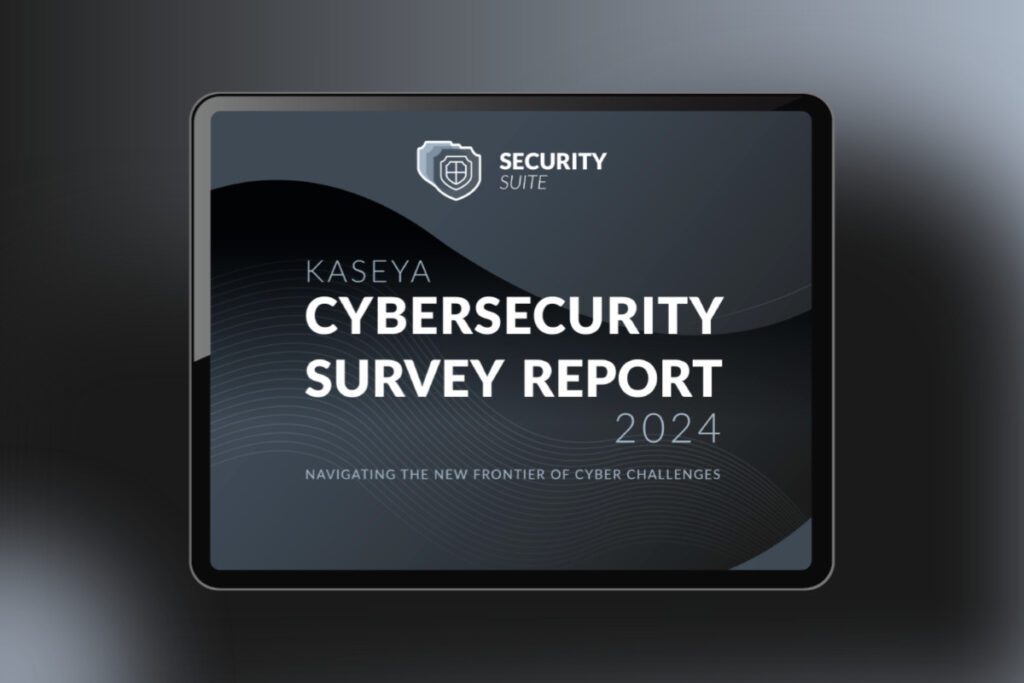Are You Prepared for the Rise of AI-Enhanced Cyberattacks?

AI is transforming cybercrime and businesses need to be ready
In the ever-evolving landscape of cybersecurity, the emergence of artificial intelligence (AI) enhanced cyberattacks has raised the stakes for individuals and organizations worldwide. The integration of artificial intelligence in the hands of malicious actors has given rise to a new breed of cyber threats that are more sophisticated, elusive and damaging than ever before. Companies need to be aware of this danger and take smart steps now to be ready for AI-powered cyberattacks.

Learn more about growing supply chain risk for businesses and how to mitigate it in a fresh eBook. DOWNLOAD IT>>
How common are AI-driven cyberattacks
Researchers have noted that the rise of ChatGPT coincided with a sudden cyberattack boom. While no one can’t say for sure that cybercriminals’ use of AI clearly caused a large uptick in cyberattacks in recent months, the evidence is very compelling. As this report in Forbes points out, researchers determined that there was a 135% increase in novel social engineering attacks between January and February 2023, which is just about when ChatGPT was beginning to come to prominence.
Experts agree that bad actors will continue to ramp up the pace and complexity of AI-driven cyberattacks, putting tremendous pressure on businesses. According to a Forrester report, 80% of cybersecurity decision-makers expect AI to increase the scale and speed of attacks and 66% expected AI “to conduct attacks that no human could conceive of.” New generative AI tools like ChatGPT and other AI-powered aids have left cybercriminals looking at a world of limitless cyberattack possibilities.


See the cybersecurity challenges that IT professionals faced in 2024, including the rise of AI and what’s next. DOWNLOAD IT>>
AI-enhanced cyberattacks are especially dangerous
AI-enhanced cyberattacks have the potential to be particularly dangerous to businesses for several reasons.
Unprecedented sophistication: AI empowers attackers to create more sophisticated and personalized threats. They can craft tailored phishing emails, use advanced malware that adapts to its environment and infiltrate networks more effectively, making detection and prevention significantly challenging. Network penetration testing can help businesses uncover vulnerabilities that can be exploited in sophisticated cyberattacks.
Increased attack frequency: The automation and speed of AI-enhanced attacks mean that organizations face a higher frequency of threats. Traditional security tools and processes struggle to keep up with the deluge of attacks, which can overwhelm resources and leave vulnerabilities exposed.
Data exfiltration: AI can be used to optimize data exfiltration, allowing attackers to steal valuable information, such as customer data or intellectual property, without being detected. This can lead to severe reputational and financial damage for the targeted organization.
Economic impact: The financial repercussions of AI-enhanced cyberattacks are substantial. These attacks can result in lost revenue, legal expenses, regulatory fines and increased cybersecurity costs. In some cases, organizations may face bankruptcy if they cannot recover from a severe breach.



Learn more about growing supply chain risk for businesses and how to mitigate it in a fresh eBook. DOWNLOAD IT>>
AI-enhanced cyberattacks are on the rise
AI-enhanced cyberattacks represent a paradigm shift in the realm of cybersecurity. These attacks leverage the capabilities of machine learning algorithms, neural networks and other AI technologies to automate and enhance various aspects of malicious activities. Here’s why these attacks are growing at an alarming rate:
Automation and scale: AI enables attackers to automate and execute cyberattacks at an unprecedented scale. For instance, AI can generate countless phishing emails, seeking vulnerabilities in systems, networks or applications, and launch multiple attacks simultaneously. The efficiency and scale of these attacks make them extremely challenging to detect and mitigate.
Enhanced precision: AI helps attackers fine-tune their attacks with unparalleled precision. Machine learning models can analyze vast datasets to identify potential targets, vulnerabilities and attack strategies, resulting in more successful and destructive attacks. The ability to adapt and evolve in real-time poses a significant threat.
Sophisticated evasion techniques: AI-equipped malware and malicious bots are adept at evading traditional cybersecurity measures. These tools can mimic human behavior, making them difficult to distinguish from legitimate users, thereby bypassing traditional security systems and remaining undetected.
Faster attack cycle: With AI, cybercriminals can speed up the attack cycle by automating reconnaissance, targeting and exploitation. This rapid pace limits an organization’s response time, increasing potential damage and compromising sensitive data. generative AI also enables bad actors to create new malware at an unprecedented pace – 75% of security professionals report a surge in attacks that the majority of them believe can be attributed to the rise of generative AI.


Explore how AI technology helps businesses mount a strong defense against phishing GET INFOGRAPHIC>>
3 tips to help organizations prepare for AI-powered cyberattacks
Given the growing threat and potential for significant damage, it is imperative for companies to prepare for AI-enhanced cyberattacks now. Here are three tips to help your organization take a strong security posture against this evolving menace:
Invest in AI-enhanced defensive solutions
Like the old adage says, if you can’t beat them, join them. One of the most effective ways to counter AI-enhanced cyberattacks is to harness the power of AI for defense. Implement advanced threat detection and prevention systems that leverage machine learning and artificial intelligence to identify anomalies and threats in real-time.
- AI-enabled email security can adapt to the evolving threat landscape to catch more malicious emails than their counterparts that do not harness the power of AI.
- An AI-enhanced solution, like a managed security operations center (SOC), can provide early warning against potential attacks, giving defenders the chance to react quickly and limit damage.
- AI-driven user behavior analytics, like those available in endpoint detection and response (EDR) solution, can detect unusual user activities that may indicate a security breach.
- AI-powered risk analysis can judge which alerts really matter, generate speedy incident summaries and automate incident response, accelerating alert investigations and triage by an average of 55%.


Find out about five of today’s biggest dark web threats to businesses in this infographic. DOWNLOAD IT>>
Bolster cybersecurity training and awareness
Even before the advent of AI usage in phishing, users had a terrible time detecting phishing. An estimated 97% of employees in a wide array of industries are unable to recognize a sophisticated phishing email. the adoption of AI tools by bad actors for phishing is only making that problem worse. Common phishing red flags like bad spelling, poor grammar and usage mistakes are virtually eliminated by AI tools like ChatGPT. This makes it easy for cybercriminals to create believable malicious messages that exploit human vulnerabilities through social engineering to launch cyberattacks like ransomware and business email compromise (BEC).
The growth of hard-to-detect phishing messages powered by AI makes ensuring that companies have a well-informed and vigilant workforce mission-critical. The best way for businesses to ensure that employees are ready for AI-enabled phishing messages is to conduct regular security awareness training that includes phishing simulations to educate employees about the latest threats and encourage vigilance. Analysts at Microsoft determined that when employees receive simulated phishing training, they’re 50% less likely to fall for phishing. Training also helps foster a culture of security awareness throughout the organization that makes it more cyber resilient.
Develop a comprehensive incident response plan
In today’s rapidly evolving threat landscape, it’s essential for every organization to be prepared for the possibility of a cyberattack. Every company needs to develop and maintain a comprehensive incident response plan that outlines the steps to take when a cyberattack occurs. Ensure that this plan integrates AI-enhanced tools for real-time threat assessment and containment. Regularly test the incident response procedures through simulated drills to assess their effectiveness and make necessary improvements. Falling victim to a cyberattack can put an organization out of business fast – 60% of companies shutter within 6 months of a successful cyberattack against them.
It’s clear that AI-enhanced cyberattacks are a rapidly growing threat that demands the immediate attention of organizations. Bad actors will inevitably continue to utilize AI to automate and enhance cyberattacks, making them harder for IT security professionals to stop. That makes AI cyber threats more dangerous than ever before. In an increasingly digital world, proactive preparation against AI-enhanced cyberattacks is not only a necessity but also a strategic imperative for the survival and success of any company.


Learn how to minimize phishing risk with AI & automation in The Anti-phishing Email Security Buyer’s Guide GET IT>>
Kaseya’s Security Suite Helps You Make the Most of AI & Automation to Improve Your Security
Kaseya’s Security Suite equips IT professionals with cutting-edge tools that make use of AI and automation to mitigate cyber risk quickly and affordably while ensuring that an organization is ready for the threats of tomorrow.
BullPhish ID – This effective, automated security awareness training and phishing simulation solution provides critical training that improves compliance, prevents employee mistakes and reduces a company’s risk of being hit by a cyberattack.
Dark Web ID – Our award-winning dark web monitoring solution is the channel leader for a good reason: it provides the greatest amount of protection around with 24/7/365 human and machine-powered monitoring of business and personal credentials, including domains, IP addresses and email addresses.
Graphus – Graphus is a cutting-edge, automated email security solution that puts three layers of AI-powered protection between employees and phishing messages. It works equally well as a standalone email security solution or supercharges your Microsoft 365 and Google Workspace email security.
Kaseya Managed SOC powered by RocketCyber – Our managed cybersecurity detection and response solution is backed by a world-class security operations center that detects malicious and suspicious activity across three critical attack vectors: endpoint, network and cloud.
Datto EDR – Detect and respond to advanced threats with built-in continuous endpoint monitoring and behavioral analysis to deliver comprehensive endpoint defense (something that many cyber insurance companies require).
Vonahi Penetration Testing – How sturdy are your cyber defenses? Do you have dangerous vulnerabilities? Find out with vPenTest, a SaaS platform that makes getting the best network penetration test easy and affordable for internal IT teams.


Read our case studies and see how MSPs and businesses have benefitted from using our solutions. READ NOW>